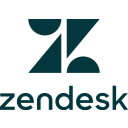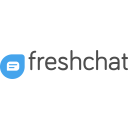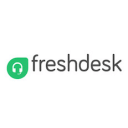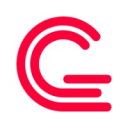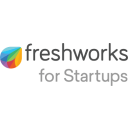Intercom vs Front: Which solution offers more for your team?
- 01Intercom vs Front: overview
- 02What's the difference between Intercom and Front?
- 03Intercom pros and cons
- 04Front pros and cons
- 05Intercom compared to Front
- 06Front compared to Intercom
- 07Features comparison
- 08Intercom vs Front: Which is the best for your business?
- 09Promotions on Collaboration software
- 10Alternatives to Intercom & Front
Access up to $3,108 savings on Intercom & $1,421 on Front
Front
6 months free on Growth plan
Access up to $3,108 savings on Intercom & $1,421 on Front
If your business depends on seamless customer communication and efficient team collaboration, choosing the right platform to manage these interactions is crucial. With a variety of tools available, selecting the one that best fits your needs can be a daunting task.
To help you make an informed decision, we compare two popular options—Intercom and Front. We’ll guide you through their features, pricing, pros, and cons, so you can evaluate these options and choose the best platform to support your business’s communication and customer service goals.
Intercom vs Front: overview
Intercom and Front are two leading platforms in the world of customer support software and team collaboration tools, each offering distinct advantages designed to cater to various business needs.
Intercom is celebrated for its all-in-one customer engagement platform that combines live chat, automated messaging, and customer data insights. It offers a comprehensive solution for businesses aiming to enhance their customer experience, with features such as customizable chatbots, targeted messaging, and detailed analytics to monitor customer interactions and outcomes. On the other hand, Front specializes in providing a unified inbox experience, where teams can collaborate seamlessly across multiple communication channels, including email, SMS, and social media. It is an ideal choice for businesses focused on improving internal collaboration and managing customer inquiries efficiently.
Now, let’s dive into the Intercom vs. Front comparison to help you make an informed decision when choosing the right communication platform for your business.
What's the difference between Intercom and Front?
Intercom and Front are two powerful tools designed to enhance customer communication and support team collaboration, but they differ significantly in their feature sets and approaches to managing customer interactions.
Intercom is an all-encompassing customer engagement platform that integrates live chat, automated messaging, and comprehensive customer data analytics. It offers a robust solution for businesses seeking to optimize their customer support and marketing efforts by providing tools that facilitate real-time communication, personalized messaging, and targeted engagement. Intercom’s platform includes advanced features such as customizable chatbots, product tours, and in-app messaging, making it easier to guide users through the customer journey. The platform’s data-driven approach also allows businesses to segment their audience, track user behavior, and tailor their communication strategies accordingly. Intercom is ideal for companies looking for a unified solution to manage customer interactions across various channels while gaining deep insights into user activity.
Front, on the other hand, focuses on enhancing team collaboration by providing a shared inbox that integrates multiple communication channels such as email, SMS, and social media. It excels in creating a unified workspace where teams can manage and respond to customer inquiries efficiently. Front’s platform is designed to streamline internal communication by allowing team members to collaborate on messages, assign tasks, and maintain visibility into ongoing conversations. Unlike Intercom, Front does not emphasize automation or detailed customer analytics but rather prioritizes the organization and efficiency of team communication. This makes Front particularly suitable for businesses that need to manage high volumes of customer inquiries in a collaborative environment.
Pricing structures also reflect these differences: Intercom typically offers tiered plans based on the range of engagement tools and features, while Front’s pricing is often based on the number of users and the volume of communication channels integrated. This distinction underscores Intercom’s focus on comprehensive customer engagement and Front’s emphasis on collaborative team communication.
Intercom pros and cons
What are the advantages of Intercom?
- Comprehensive customer engagement tools: Intercom offers a wide range of tools, including live chat, in-app messaging, automated workflows, and targeted messaging. This makes it a robust platform for businesses aiming to engage with customers across various touchpoints.
- Advanced segmentation and personalization: Intercom allows businesses to segment users based on behavior, demographics, and other criteria, enabling highly personalized communication. This helps in delivering more relevant content to different customer segments.
- Customizable chatbots and automation: The platform provides powerful chatbot and automation features that can handle routine queries, schedule messages, and guide customers through specific workflows, reducing the workload on support teams.
- In-depth analytics and reporting: Intercom’s analytics tools offer detailed insights into user behavior, engagement rates, and the effectiveness of campaigns. This data-driven approach helps businesses optimize their customer communication strategies.
- Integration with other tools: Intercom integrates seamlessly with a wide variety of other tools and platforms, including CRM systems, email marketing software, and project management tools, making it a flexible choice for many businesses.
What are the disadvantages of Intercom?
- High cost for advanced features: Intercom’s pricing can be steep, especially for smaller businesses or those requiring advanced features like in-depth analytics, automated workflows, and extensive integrations.
- Steep learning curve: Due to its comprehensive feature set, Intercom can be complex to set up and use, particularly for businesses that are new to such platforms or have limited technical resources.
- Limited customization in some areas: While Intercom offers customization options, some users find the level of customization, particularly for chat widgets and email templates, to be somewhat limited compared to other platforms.
- Overwhelming for simple use cases: For businesses that only need basic customer support or messaging tools, Intercom’s extensive features might feel overwhelming or unnecessary, leading to potential underutilization of the platform.
- Response times for support: Some users have reported slower response times from Intercom’s support team, which can be a drawback, especially when dealing with urgent issues or complex queries.
Compare Intercom to other tools
Front pros and cons
What are the advantages of Front?
- Unified inbox for team collaboration: Front excels at bringing all communication channels (email, SMS, social media, etc.) into a single, shared inbox. This unified approach makes it easier for teams to collaborate, assign tasks, and manage customer inquiries efficiently.
- Efficient workflow management: The platform allows users to create custom workflows, set up automation rules, and manage tasks within the inbox. This helps streamline operations and ensures that no customer query goes unanswered.
- Collaboration features: Front is designed with team collaboration in mind, offering features like internal comments, message assignments, and visibility into ongoing conversations. This promotes transparency and reduces the chances of miscommunication.
- Intuitive user interface: Front's interface is user-friendly and intuitive, making it easy for teams to adopt and use the platform with minimal training. The design is clean and focused on enhancing productivity.
- Integration with various tools: Front integrates with a wide range of third-party applications, including CRMs, project management tools, and more, allowing businesses to connect their existing tech stack seamlessly.
What are the disadvantages of Front?
- Limited advanced features: While Front excels in team collaboration and inbox management, it lacks some of the advanced customer engagement and automation features offered by platforms like Intercom, making it less suitable for businesses needing comprehensive engagement tools.
- Pricing based on user count: Front's pricing structure is based on the number of users, which can become expensive for larger teams or growing businesses that require multiple user accounts.
- Less focus on customer analytics: Front does not offer the same level of in-depth customer analytics and segmentation as some other platforms, which can be a limitation for businesses looking to analyze and optimize customer interactions in detail.
- Customization limitations: Some users may find Front's customization options for workflows and templates to be limited, potentially restricting how well the platform can be tailored to specific business needs.
- Potential over-reliance on email: While Front is designed to unify multiple communication channels, some users may find that the platform is still heavily email-centric, which could limit its effectiveness for businesses that rely on other communication channels like chat or social media.
Compare Front to other tools
Intercom compared to Front
Intercom and Front serve distinct purposes in customer communication, with Intercom excelling in customer engagement through its advanced features like live chat, automated messaging, and detailed analytics. It's ideal for businesses focused on personalized customer interactions and data-driven strategies.
In contrast, Front is designed for team collaboration, providing a unified inbox that consolidates multiple communication channels, making it easier for teams to manage customer inquiries collectively. While Intercom offers a more comprehensive suite for customer engagement, Front shines in streamlining internal communication and ensuring efficient team workflows across various channels.
Is Intercom better than Front?
Whether Intercom is better than Front depends on your specific business needs. Intercom excels in customer engagement, offering advanced tools like automated messaging, personalized interactions, and deep analytics, making it ideal for businesses focused on building strong customer relationships.
On the other hand, Front is better suited for teams that prioritize collaboration and efficiency in handling customer inquiries. Its unified inbox and robust collaboration features streamline internal communication, making it easier for teams to work together. If your goal is enhanced customer engagement, Intercom may be the better choice, while Front is superior for team-based communication management.
What is Intercom best used for?
Intercom is best used for enhancing customer engagement and support through its powerful suite of tools, including live chat, automated messaging, and in-depth customer analytics. It excels in providing personalized communication experiences, allowing businesses to target users with relevant messages based on their behavior and preferences.
Intercom's platform is ideal for companies that want to streamline their customer support, drive user engagement, and gain insights into customer interactions. Whether for onboarding new users, guiding them through the product, or providing timely support, Intercom helps businesses build stronger relationships and improve overall customer satisfaction.
Can Intercom replace Front?
While Intercom and Front share some overlapping features in managing customer communication, Intercom is not a direct replacement for Front. Intercom is designed primarily for customer engagement, offering advanced tools like live chat, automated messaging, and customer data analytics, making it ideal for businesses focused on personalized interactions and user engagement.
Front, however, is specialized in team collaboration with its shared inbox and streamlined workflow management, allowing teams to efficiently handle customer inquiries across multiple channels. Businesses seeking a tool for internal collaboration and unified inbox management may find Front more suitable, while Intercom is better for comprehensive customer engagement strategies.
Is Intercom cheaper than Front?
Intercom is not necessarily cheaper than Front; the cost comparison depends on the specific features and scale of use. Intercom's pricing is generally higher, especially as you add advanced features like automation, detailed analytics, and expanded user engagement tools. It tends to offer tiered plans that can become expensive for businesses needing comprehensive customer engagement solutions.
Front, on the other hand, structures its pricing based on the number of users and communication channels, which can be more affordable for smaller teams focused on collaborative inbox management.
Is there a better Collaboration software than Intercom?
Intercom is a leading customer engagement platform with a robust feature set, but it's important to explore other software options that might better suit your specific needs.
Notable alternatives to Intercom in the customer communication and support space include Zendesk, HubSpot, Freshdesk, and Drift.
The choice of communication software depends on your business's unique requirements, priorities, and preferences. However, if you’re looking for a comprehensive solution that excels in live chat, automated messaging, and customer analytics, Intercom remains a strong option. Yet, depending on your focus—whether it’s team collaboration, extensive customer support, or specific integrations—exploring alternatives may reveal a better fit.
1 year free on the Advanced plan on Intercom
Get 1 year free on the Advanced plan on Intercom and up to $3,108 savings with Secret.
Front compared to Intercom
Front and Intercom serve different purposes in customer communication, with Front focusing on team collaboration and streamlined inbox management across multiple channels like email, SMS, and social media. It's designed to enhance internal workflows by allowing teams to collaborate on customer inquiries efficiently.
In contrast, Intercom is centered on customer engagement, offering advanced features like live chat, automated messaging, and in-depth analytics to personalize and optimize customer interactions. While Front excels in unifying communication for teams, Intercom provides a more comprehensive suite for businesses looking to enhance customer engagement and gain detailed insights into user behavior.
Is Front better than Intercom?
Whether Front is better than Intercom depends on your specific needs. Front excels in team collaboration and efficiently managing communications across multiple channels, making it ideal for businesses that prioritize internal workflow and seamless coordination among team members. Its unified inbox and collaborative features streamline the handling of customer inquiries, enhancing overall team productivity.
On the other hand, Intercom is more suitable for businesses that focus on customer engagement and require advanced tools for personalized communication and data-driven insights. If your primary goal is to improve team collaboration and streamline communication processes, Front might be the better choice for your business.
What is Front best used for?
Front is best used for enhancing team collaboration and managing customer communication through a unified inbox that consolidates multiple channels like email, SMS, and social media. It is particularly effective for teams that need to work together efficiently on customer inquiries, allowing for easy assignment, internal comments, and real-time collaboration within a single platform.
Front streamlines workflows, reduces response times, and ensures that no customer message is missed, making it ideal for businesses that prioritize internal communication and the efficient handling of high volumes of customer interactions across various communication channels.
Can Front replace Intercom?
Front cannot fully replace Intercom because they serve different purposes in customer communication. Front is designed for team collaboration and centralized inbox management, making it ideal for businesses that need to streamline internal workflows and manage multiple communication channels like email, SMS, and social media in one place.
Intercom, on the other hand, focuses on customer engagement, offering advanced features like live chat, automated messaging, and detailed customer analytics. While Front excels in organizing and handling inbound communication efficiently, Intercom provides more robust tools for personalized customer interaction and engagement, making it better suited for businesses seeking to optimize customer experience
Is Front cheaper than Intercom?
Front is generally cheaper than Intercom, particularly for businesses focused on team collaboration and managing communication channels through a unified inbox. Front’s pricing is typically based on the number of users and the specific features required, making it more cost-effective for teams primarily looking to streamline internal communication.
In contrast, Intercom’s pricing can be higher, especially as you add advanced features like automated messaging, customer engagement tools, and in-depth analytics. While Intercom offers a broader range of functionalities for customer interaction, its costs can quickly escalate, making Front a more affordable option for businesses with simpler communication needs.
Is there a better Customer Experience software than Front?
Front is an excellent platform for team collaboration and inbox management, but it's important to explore other software options that might better align with your specific needs, considering factors like collaboration features, integration capabilities, user interface, and scalability.
Noteworthy alternatives to Front in the team communication and customer support space include Intercom, LiveAgent, Help Scout, and Slack.
The best choice will depend on your business’s unique requirements, priorities, and preferences. However, if you need a tool that excels in unifying communication channels and streamlining team workflows, Front remains a strong option. Exploring alternatives may reveal a better fit for specialized needs.
6 months free on Growth plan on Front
Get 6 months free on Growth plan on Front and up to $1,421 savings with Secret.
Features comparison
Front Surpasses Intercom in Ease-of-Use for Team Collaboration
When it comes to ease-of-use, Front steps out ahead of Intercom, particularly in the context of team collaboration and managing multiple communication channels. Front's intuitive interface is designed to simplify the process of handling emails, SMS, and social media messages in a single, unified inbox, making it easier for teams to stay organized and respond quickly to customer inquiries. For example, team members can easily assign messages, leave internal comments, and track conversation history without leaving the inbox.
In contrast, while Intercom offers a powerful suite of customer engagement tools, its extensive features can result in a steeper learning curve, especially for teams focused primarily on streamlining their communication processes. Front's simplicity and user-friendly design make it a preferred choice for businesses that prioritize efficient and collaborative communication.
Intercom Outperforms Front in Customer Feedback Collection
Intercom outshines Front when it comes to collecting customer feedback and surveys, offering more robust and integrated tools for this purpose. Intercom allows businesses to seamlessly integrate customer feedback forms and surveys directly into live chats, emails, or even in-app messages, making it incredibly versatile for capturing valuable insights at various customer touchpoints. For example, after resolving a support query, Intercom can automatically prompt users to complete a satisfaction survey, providing immediate and relevant feedback. This capability is particularly useful for businesses looking to measure customer satisfaction, gather insights for product improvement, and enhance overall customer experience.
On the other hand, Front lacks these built-in feedback features, requiring additional tools or manual processes to collect customer input, which can be less efficient and more fragmented. Intercom’s ability to embed feedback collection into the natural flow of customer interactions makes it a superior choice for businesses focused on continuously improving their products and services based on direct customer insights.
Intercom Excels Over Front in Chatbot Efficiency and User Experience
While both Intercom and Front offer automatic responses, Intercom's chatbot setup is significantly more user-friendly and efficient, providing a superior experience for both businesses and their customers. Intercom’s chatbots are designed to deliver instant responses to customer inquiries, reducing or eliminating waiting times, which is crucial for maintaining high customer satisfaction. For example, Intercom's bots can handle common queries, guide users through processes, and even schedule meetings, all without human intervention. This instant interaction ensures that customers receive timely help, enhancing their overall experience.
In contrast, Front’s automated routing feature primarily focuses on directing inquiries to the appropriate team members, which, while useful, does not offer the same immediate engagement as Intercom’s chatbots. Intercom's ability to automate responses while maintaining a personal touch makes it a more powerful tool for businesses looking to improve customer interaction efficiency.
Both Intercom and Front Offer Superb Analytics for Customer and Team Performance
Both Intercom and Front offer robust analytics tools that cater to the needs of businesses seeking to optimize customer interactions and team performance. Intercom stands out with its comprehensive performance analytics, which allow businesses to track the success rate of customer interactions, monitor user engagement, and gain insights into customer journeys. For example, Intercom’s analytics can reveal how effectively chatbots resolve queries or how well targeted messages perform across different customer segments.
Similarly, Front provides insightful analytics focused on customer engagement, service quality, and team efficiency. These analytics allow managers to assess response times, track the resolution of customer inquiries, and measure overall team performance. By offering detailed reports on how well teams handle communication tasks and how customers interact with their services, Front ensures that businesses can maintain high service standards. Therefore, when it comes to analytics, both platforms excel, providing valuable data that can help businesses refine their strategies and improve overall performance.
Front Takes the Lead Over Intercom in Team Collaboration
When it comes to team collaboration, Front takes the lead over Intercom, particularly due to its highly effective unified inbox that consolidates messages from various channels into a single, easily manageable thread. This feature allows team members to work together seamlessly on the same customer message, whether it comes from email, SMS, or social media, enhancing communication and reducing response times. For example, in Front, team members can share drafts, leave internal comments directly within individual messages, and even assign tasks without ever leaving the inbox. This level of integration ensures that everyone on the team is on the same page, fostering better collaboration and quicker resolutions.
While Intercom also offers collaboration tools, such as internal notes and assignment capabilities, these features are not as streamlined or deeply integrated as those in Front. Front’s design prioritizes team efficiency and communication, making it a more powerful tool for businesses where collaborative customer support is essential.
Front Outshines Intercom in Customization Versatility
While Intercom offers a robust set of flexible tools, Front shines in the area of customization, providing more versatile options for tailoring the platform to specific business needs. Front's customizable workflows are particularly notable, allowing teams to set up automated rules, apply tags, and create tailored procedures that fit their unique processes. For example, a team can automate the tagging of emails based on content or sender, ensuring that messages are automatically routed to the right team member. Additionally, Front’s ability to create and use custom email templates ensures consistency in brand voice across all communications. This feature is especially beneficial for maintaining a professional and uniform customer experience.
While Intercom does offer customization options, such as configurable chatbots and targeted messaging, Front’s deeper and more varied customization capabilities give it an edge, especially for teams that need to create highly specific workflows and maintain consistent communication standards across multiple channels.
Intercom Outshines Front in Integration Capabilities
Shifting our focus to integration possibilities, Intercom shines brighter compared to Front. Intercom's platform is designed to seamlessly integrate with a wide array of tools and services, making it highly versatile for businesses with complex tech stacks. For instance, Intercom offers native integrations with popular CRM systems like Salesforce and HubSpot, marketing automation tools like Marketo, and a variety of other platforms such as Slack, Shopify, and Google Analytics. This extensive integration capability allows businesses to centralize their customer data and automate workflows across different systems.
In contrast, while Front does offer integrations with essential tools like Asana, Trello, and Zapier, its integration ecosystem is not as expansive as Intercom’s, which may limit its adaptability for businesses looking to connect a broader range of services. Intercom's ability to integrate deeply with numerous platforms makes it a more powerful choice for businesses that require extensive connectivity across their tools.
Subscribe to our newsletters.
No FOMO here. Stay up-to-date on all the latest deals and news with our monthly newsletter straight to your inbox like 109,000+ entrepreneurs (+ Get 10% off on on our Premium Membership!)
Intercom vs Front: Which is the best for your business?
Intercom is the best tool for you if:
- You need a comprehensive platform that combines live chat, automated messaging, and customer data analytics to enhance customer engagement and streamline communication across multiple channels.
- Your business requires advanced segmentation and targeting capabilities to deliver personalized messages and content to different customer segments based on their behavior, preferences, and interaction history.
- You are looking for a solution that offers powerful chatbot automation to handle routine customer inquiries, provide instant support, and improve response times without overloading your support team.
- Your team benefits from in-depth analytics and reporting features that provide actionable insights into customer interactions, helping you optimize engagement strategies and improve customer satisfaction.
- You need a platform that integrates seamlessly with your existing tools and systems, such as CRM software, email marketing platforms, and analytics tools, to create a unified customer communication ecosystem.
Front is the best tool for you if:
- You need a unified inbox that consolidates all your communication channels, allowing your team to manage emails, SMS, and social media messages efficiently from a single platform.
- Your team requires advanced collaboration features, such as shared drafts, internal comments, and message assignments, to work together seamlessly and respond to customer inquiries more effectively.
- You prioritize streamlined workflows and customizable automation rules that can be tailored to fit your team's specific needs, improving efficiency and reducing manual work.
- Maintaining consistent communication is key, and you benefit from using customizable email templates to ensure brand voice uniformity across all customer interactions.
- You want a platform that integrates well with your existing tools, such as project management software and CRM systems, to enhance team productivity and maintain a cohesive workflow.
Alternatives to Intercom & Front
Promotions on Collaboration software
Start saving on the best SaaS with Secret.
Secret has already helped tens of thousands of startups save millions on the best SaaS like Intercom, Front & many more. Join Secret now to buy software the smart way.








